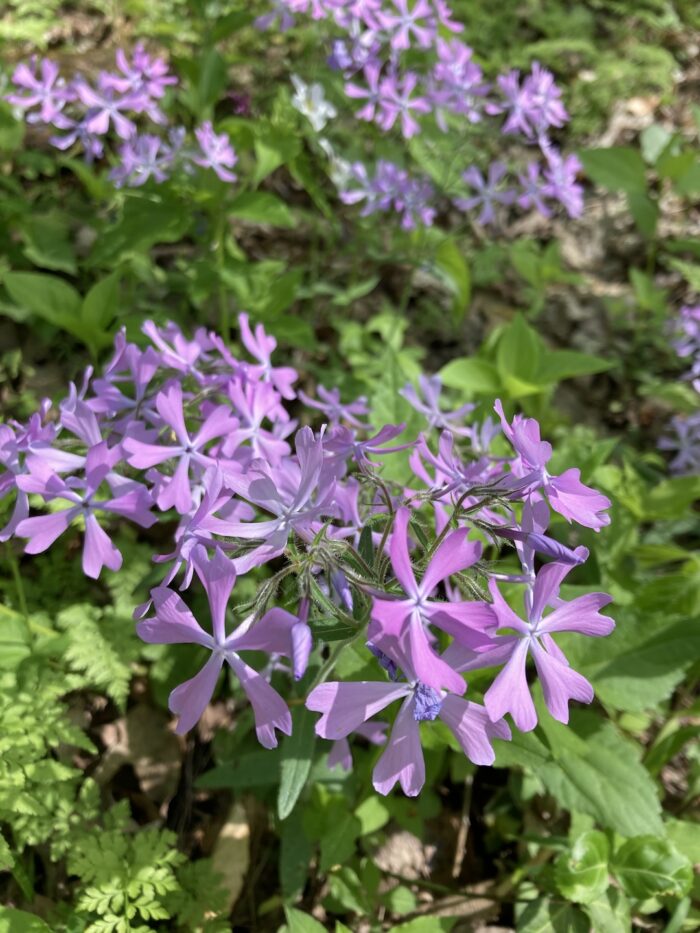
Joseph here, your GPOD editor. Last week I was in the Cincinnati area for a work project, and I took some time to hike in a few area parks. It was perfect time for spring wildflowers, and I saw some real beauties!
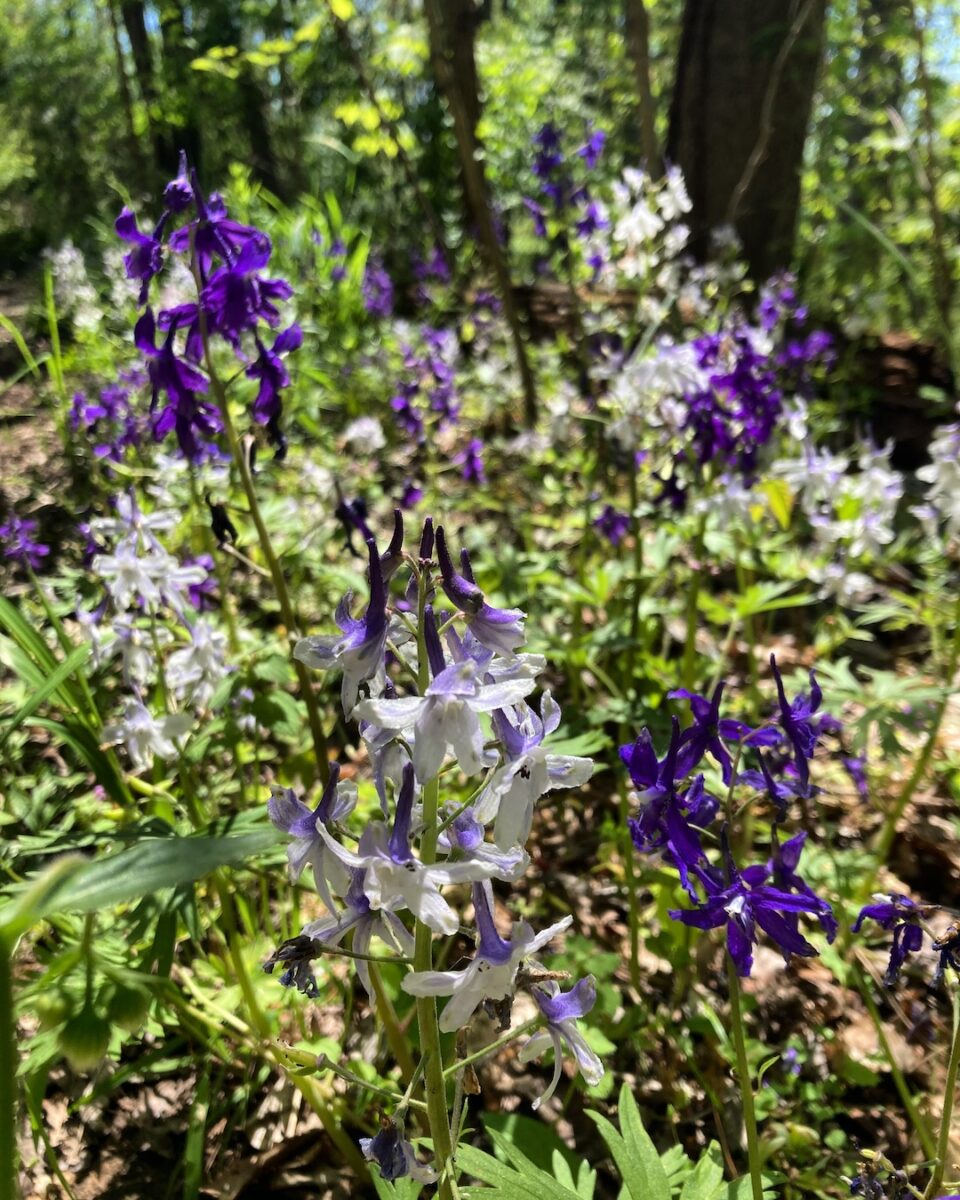 This was my hands-down favorite plant on the trip: Delphinium tricorne (Zones 4–8). The familiar garden delphiniums are hybrids of European species, but we have some native species in the United States as well. This one is a small spring bloomer that then goes dormant in the summer—and what a beauty it is! Ranging from white to dark purple, each plant was a little different, but all were beautiful. I’m not sure why it isn’t common in gardens; it would be a great spring-blooming change from the normal daffodils and tulips.
This was my hands-down favorite plant on the trip: Delphinium tricorne (Zones 4–8). The familiar garden delphiniums are hybrids of European species, but we have some native species in the United States as well. This one is a small spring bloomer that then goes dormant in the summer—and what a beauty it is! Ranging from white to dark purple, each plant was a little different, but all were beautiful. I’m not sure why it isn’t common in gardens; it would be a great spring-blooming change from the normal daffodils and tulips.
 A terrible picture, but the butterflies were enjoying the delphinium flowers too!
A terrible picture, but the butterflies were enjoying the delphinium flowers too!
 It’s always fun to see the strange little brownish flowers of the pawpaw (Asimina triloba, Zones 5–9). These little flowers will develop into delicious fruit later in the summer.
It’s always fun to see the strange little brownish flowers of the pawpaw (Asimina triloba, Zones 5–9). These little flowers will develop into delicious fruit later in the summer.
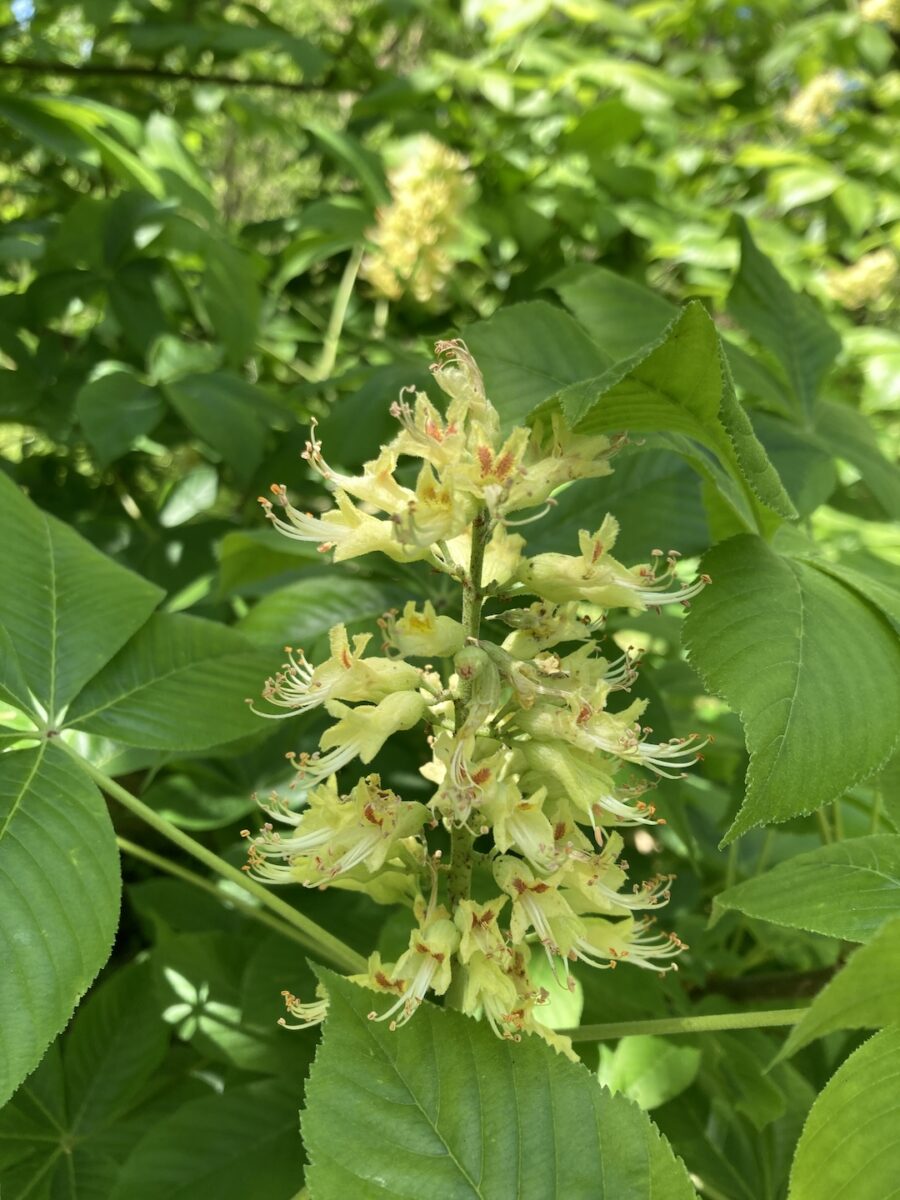 How fitting for a trip to Ohio, the Buckeye State, to see a buckeye tree (Aesculus glabra, Zones 4–9) in bloom! The greenish yellow flowers are easy to miss from a distance but quite beautiful up close.
How fitting for a trip to Ohio, the Buckeye State, to see a buckeye tree (Aesculus glabra, Zones 4–9) in bloom! The greenish yellow flowers are easy to miss from a distance but quite beautiful up close.
 Spiderwort (Tradescantia virginiana, Zones 4–9) is a plant I’ve seen many times in gardens, but it was fun to see it growing in the wild. The purple flowers are so velvety and perfect.
Spiderwort (Tradescantia virginiana, Zones 4–9) is a plant I’ve seen many times in gardens, but it was fun to see it growing in the wild. The purple flowers are so velvety and perfect.
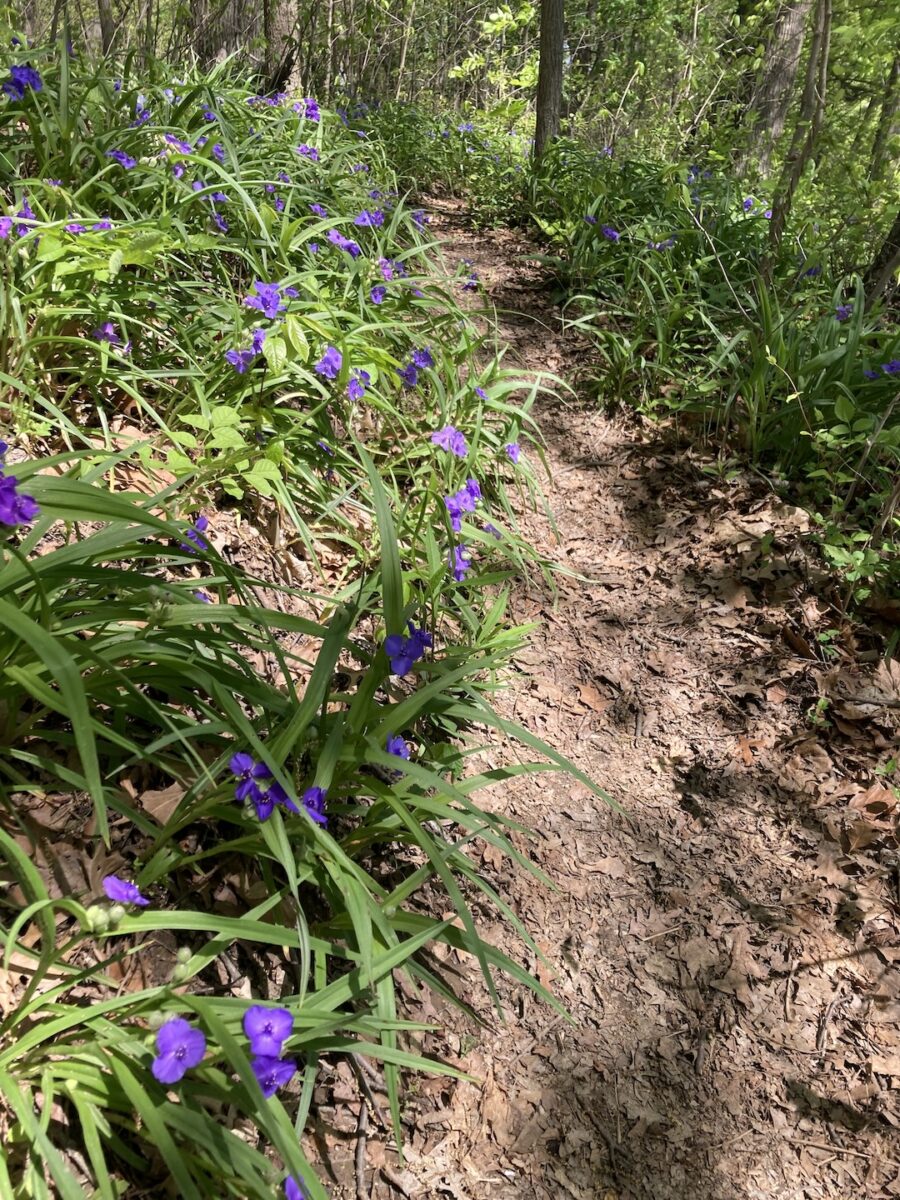 In one park the spiderworts were lining the path, making a display that I am itching to try in my home garden.
In one park the spiderworts were lining the path, making a display that I am itching to try in my home garden.
 Blue-eyed Mary (Collinsia verna, annual) has the sweetest little blue flowers. This wildflower is a true annual—the seedlings germinate in the fall, overwinter, and then bloom and die in the spring.
Blue-eyed Mary (Collinsia verna, annual) has the sweetest little blue flowers. This wildflower is a true annual—the seedlings germinate in the fall, overwinter, and then bloom and die in the spring.
 Woodland phlox (Phlox divaricata, Zones 3–8) was dotted all over the woods, and every plant was a little different: Some more pink and others bluer, some with wide petals and others with narrow ones. This clump was particularly beautiful to my eye.
Woodland phlox (Phlox divaricata, Zones 3–8) was dotted all over the woods, and every plant was a little different: Some more pink and others bluer, some with wide petals and others with narrow ones. This clump was particularly beautiful to my eye.
 Trillium flexipes (Zones 3–8) is a beautiful species of trillium with huge leaves and clear white flowers.
Trillium flexipes (Zones 3–8) is a beautiful species of trillium with huge leaves and clear white flowers.
 I was also blown away by this specimen of Trillium lutea (Zones 3–8), which may be the largest one I’ve ever seen.
I was also blown away by this specimen of Trillium lutea (Zones 3–8), which may be the largest one I’ve ever seen.
I always love getting out into nature. We can only aspire in our gardens to make something half as beautiful as what nature does all on its own.
Have a garden you’d like to share?
Have photos to share? We’d love to see your garden, a particular collection of plants you love, or a wonderful garden you had the chance to visit!
To submit, send 5-10 photos to [email protected] along with some information about the plants in the pictures and where you took the photos. We’d love to hear where you are located, how long you’ve been gardening, successes you are proud of, failures you learned from, hopes for the future, favorite plants, or funny stories from your garden.
Have a mobile phone? Tag your photos on Facebook, Instagram or Twitter with #FineGardening!
Do you receive the GPOD by email yet? Sign up here.




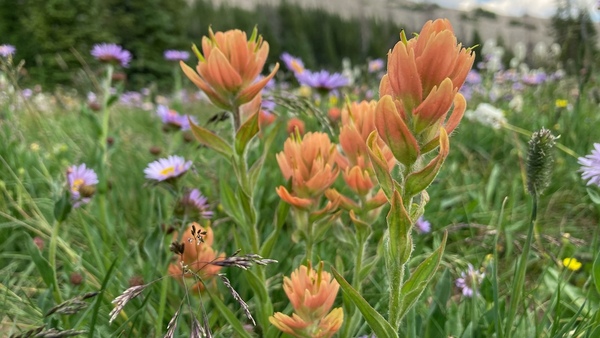












Comments
Thanks for showcasing these wildflowers, Joseph. It is especially interesting to see plants that are cultivated for garden use as they grow in a natural habitat.
Thanks for sharing. There were a couple of new ones for me that I will be looking for a source.
What a nice post of wild flowers in a park! And I loved the action photo of the butterfly- I thought it was really a great photo!
Thank you so much for these beautiful wildflowers! Those delphiniums are particularly beautiful!
I love Collinsia verna! Once I grew it long ago. Sigh. It pops with the bicolor flower.
Thank you. Who would not admire the deep purple of Delphinium tricorne?
Log in or create an account to post a comment.
Sign up Log in